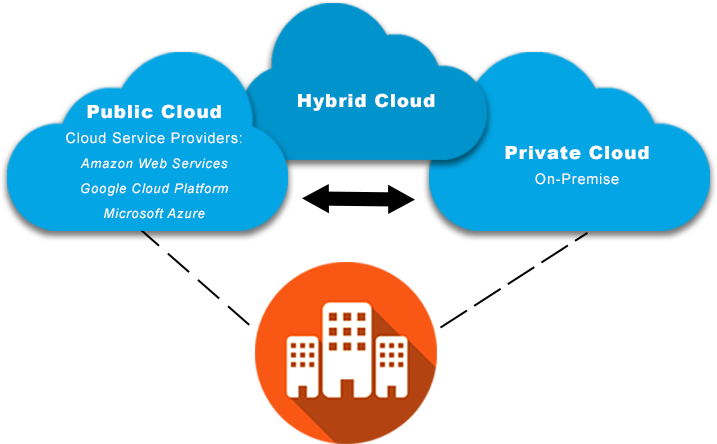Hybrid Cloud Document Management System
Personal users may indeed be familiar with the concept of the on-premises computation, but businesses have been using cloud services for many years in order to optimize their workflow and back-up their sensitive data.

For many years, these businesses were forced to use either the private cloud (their own server) or the public cloud (which they shared with others). Both of these solutions had their own sets of pros and cons attached to their use. For example, public clouds were very scalable but came with many expensive coding inconsistencies, whereas private clouds were very seamlessly integrated yet came with expensive hardware investments in server equipment.
Both on-premise computation and public clouds have their advantages in certain business scenarios, but what if you could have the best of both worlds? As you may have guessed, this is where the hybrid cloud comes in!
Built specifically for use by your internet browser, the web-based interface provides familiar navigation and controls that allow you to search, retrieve, and share documents.
The web-based document management system emulates a traditional desktop interface, allowing you to organize your digital files into folders and subfolders. This enriches the typical features of a DMS like version control and document workflow. Because you do not have to take care of the infrastructure, even small businesses can implement their records management and real time business processes.
Advantages of the Hybrid Cloud
TurgidDOC can indeed be used in the hybrid cloud. For instance, a local installation can synchronize the local repository to a remote cloud installation, providing you with both on-premises and remote cloud storage. This is brilliant for reliability and security, especially if your company is storing data which is sensitive to you and your customers.
Although TurgidDOC will securely manage your document on your on-premises servers, what happens if there is a disaster or freak accident such as a fire, flood, hurricane, or extreme cold snap? If your servers go down, all of your information goes down with them, and that would include TurgidDOC. Nonetheless, with TurgidDOC’s state-of-the-art hybrid cloud storage you can be confident that your data is all backed up in multiple physical locations allowing you to rest assured that your documents are safe if anything bad should occur.
Secure Your Documents

If you choose the TurgidDOC Hybrid Cloud, your main application will be hosted in your own server, which is handled by you for your maximum privacy, but you will be able to publish part of your repository to the Cloud site so a wider audience will be able to access to a restricted set of contents without having you to take care of all the security policies nor secure your internal infrastructure.
So, why not take advantage of TurgidDOC’s Hybrid Cloud solution and see how it can solve your business challenges more quickly and efficiently? Get in touch with a member of our team.
TurgidDOC Cloud and TurgidDOC On-Premise together
The hybrid cloud offers you to best of both worlds, allowing you to take advantage of the unique advantages that public and private clouds have to offer your company. This dynamic hybrid cloud environment allows you to manage both your private cloud and public cloud workspaces via 1 convenient portal. This way, you can streamline your systems and put them in one place.

Not only does the hybrid cloud make it easier to efficiently find and organize your documents, but it allows you to organize your workloads according to each environment’s strengths. For example, sensitive data can be stored on a private (i.e. more secure) cloud while projects which are likely to scale quickly can be run on flexible public cloud servers that can accommodate scalability.
All in all, hybrid cloud systems allow you to cover all of your bases while simplifying your workflow. It even simplifies your billing and support assistance – you’ll only be paying one company and you’ll be receiving technical support for your all-encompassing hybrid cloud instead of for separate cloud systems where issues could quickly become confusing.
